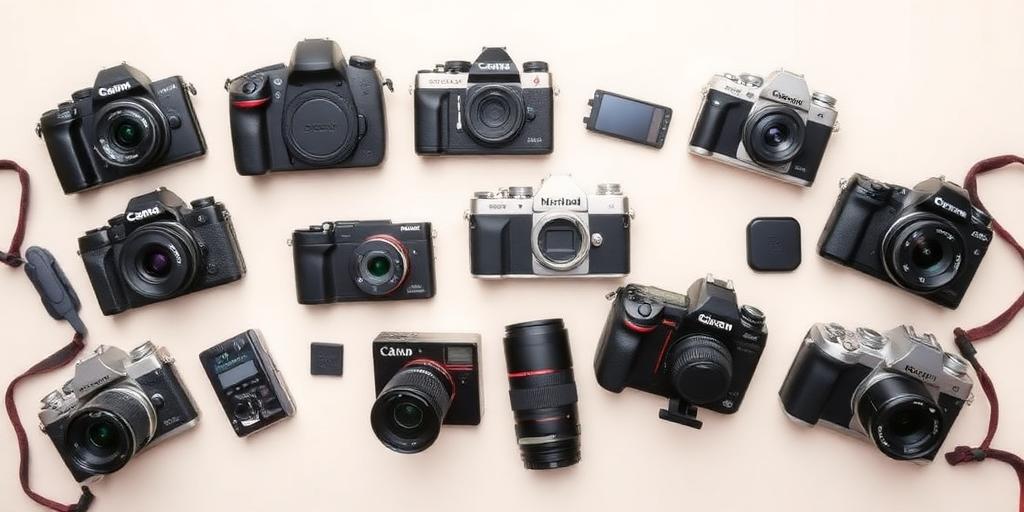How to Choose the Right Digital Camera for Your Needs
Selecting the optimal digital camera can be a daunting task given the vast array of options available today. From professional-grade DSLRs to compact mirrorless systems, each category offers distinct advantages and caters to specific photographic pursuits. This authoritative guide will demystify the selection process, empowering you to make an informed decision aligned with your photographic aspirations and practical requirements.
Understanding Your Photographic Needs
The first and most critical step in choosing a digital camera is to meticulously define your primary use case. Are you an aspiring landscape photographer, a vlogger, a sports enthusiast, or simply seeking a versatile camera for family memories? Your intended subject matter and shooting environment will dictate essential features and capabilities.
- Casual Photography: For everyday snapshots, travel, and social sharing, portability and ease of use are paramount.
- Creative Pursuits: Those interested in exploring artistic composition, depth of field, and advanced techniques will require more manual control and lens versatility.
- Professional Work: Demands superior image quality, robust build, extensive lens options, and advanced connectivity.
- Video Production: Requires excellent video resolution, high frame rates, image stabilization, and external audio inputs.
Key Camera Types and Their Characteristics
Understanding the fundamental differences between camera types is crucial for making an appropriate choice. Each offers a unique balance of performance, size, and cost.
1. DSLR (Digital Single-Lens Reflex) Cameras
DSLRs have long been the gold standard for serious photographers. They utilize a mirror mechanism to direct light to an optical viewfinder, providing a direct, lag-free view of the scene. They offer excellent image quality, extensive lens ecosystems, and robust bodies, making them suitable for a wide range of photography, including sports and wildlife. However, they are typically larger and heavier than their mirrorless counterparts.
2. Mirrorless Cameras
Mirrorless interchangeable-lens cameras (MILCs) have rapidly gained popularity. By removing the mirror box, they offer a more compact and lighter design while retaining large sensors and interchangeable lenses. They utilize electronic viewfinders (EVFs) and often boast superior video capabilities, faster autofocus systems, and advanced in-body image stabilization. Mirrorless systems are rapidly evolving and now compete directly with DSLRs in performance across many categories.
3. Compact Cameras (Point-and-Shoot)
Compact cameras are designed for simplicity and portability. While many now feature larger sensors and advanced controls (often termed "enthusiast compacts"), their defining characteristic is a fixed, non-interchangeable lens. They are ideal for discreet street photography, casual travel, and users who prioritize convenience over extensive customization. This category also includes "superzoom" cameras, offering incredible focal range in a compact form factor.
4. Action Cameras
Engineered for durability and extreme environments, action cameras are small, rugged, and typically waterproof. They excel at capturing wide-angle video and stills during high-octane activities. Their primary strength lies in their ability to be mounted almost anywhere, making them invaluable for unique perspectives.
Critical Factors to Consider When Choosing a Digital Camera
Once you have a general understanding of camera types, delve into these specific technical considerations:
Sensor Size and Image Quality
The sensor is the heart of a digital camera, directly influencing image quality, low-light performance, and depth of field. Larger sensors (Full-Frame, APS-C) generally yield superior image quality, better dynamic range, and shallower depth of field compared to smaller sensors (Micro Four Thirds, 1-inch, smartphone sensors). Consider your priorities for image fidelity and low-light shooting when assessing sensor size.
Lens System and Versatility
For interchangeable-lens cameras (DSLRs and Mirrorless), the lens ecosystem is as important as the camera body itself. Research the availability, quality, and cost of lenses for your chosen system. A versatile lens lineup ensures you can adapt to various shooting scenarios, from wide-angle landscapes to telephoto wildlife shots. For compact cameras, assess the fixed lens's focal range and maximum aperture.
Autofocus System
A camera's autofocus (AF) system is paramount for capturing sharp images, especially with moving subjects. Look for cameras with a high number of AF points, fast and accurate tracking capabilities, and reliable eye/face detection for portraits. Mirrorless cameras often lead in AF speed and subject tracking due to their on-sensor phase-detection systems.
Video Capabilities
With the rise of multimedia content, video features are increasingly important. Consider maximum resolution (4K, 1080p), frame rates (24p, 30p, 60p, 120p), internal stabilization (IBIS), Log profiles for color grading, and external microphone inputs. A camera optimized for video can significantly enhance your content creation.
Ergonomics and Build Quality
How a camera feels in your hands is subjective but crucial for comfortable prolonged use. Evaluate the grip, button layout, and overall build quality. A weather-sealed body is advantageous for outdoor photography in challenging conditions. The user interface (menus, touchscreen functionality) also contributes significantly to the shooting experience.
Budget
Define a realistic budget that encompasses not just the camera body but also essential accessories such as lenses, extra batteries, memory cards, and a protective bag. Remember that lenses often represent a more significant long-term investment than the camera body itself.
Making Your Final Decision
Armed with this comprehensive understanding, narrow down your choices by comparing models that fit your needs and budget. Read professional reviews, watch video testimonials, and, if possible, handle the cameras in person at a reputable retailer. Prioritize features that directly impact your primary photographic goals. Choosing the right digital camera is an investment in your creative journey; making an informed decision ensures lasting satisfaction and exceptional photographic results.




